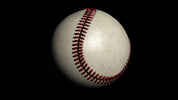
How Heavy Is a Baseball? Learn the Importance of Weight in the Game
, by Brad Purcell, 7 min reading time

, by Brad Purcell, 7 min reading time
When it comes to the game of baseball, one key question often arises: How much does a baseball weigh? Whether you're a Major League Baseball fan, a Minor League player, or just starting with Tee ball, understanding the weight of a baseball is crucial for performance. The weight can affect everything from pitching mechanics to the aerodynamics of the baseball in flight. In this article, we explain the standard weight of a regulation baseball and explore how variations in weight impact the game at different levels. Keep reading to learn more!
The standard baseball used in professional games, such as those in Major League Baseball (MLB), must adhere to strict regulation baseball specifications. According to MLB guidelines, a regulation-size baseball weighs between 5 and 5.25 ounces (141.75 to 148.83 grams). The weight of the ball is crucial in determining its behavior during a game of baseball, as it influences pitching mechanics, flight paths, and exit velocities when hit with a bat.
These professional baseballs are crafted with meticulous attention to detail, ensuring a consistent ball weight for every game. However, there can still be slight variations in ball weight due to differences in manufacturing techniques.
A typical Major League Baseball is made from specific materials that help maintain its consistency and durability:
These materials contribute to the aerodynamics of baseball and the way the ball behaves during flight. The ball's leather cover ensures a smooth surface, making it easier for players to grip, throw, and hit the ball accurately.
The weight of a baseball affects several aspects of the game, from pitching mechanics to how the ball travels through the air. A heavier ball will have more momentum, while a lighter ball can travel faster and may behave differently when pitched or hit.
The weight of a baseball is essential for pitchers to control speed, spin, and accuracy. A heavier ball can result in a slower pitch, while a lighter ball is faster but can be harder to control. Baseball bats also play a role in the performance of the ball, affecting exit velocities and how the ball responds.
The weight of a baseball also affects its flight path. Heavier balls tend to drop more quickly, creating a different effect for baseball pitchers. A lighter ball can travel farther, but may be more prone to deviation. The type of ball used, such as a rubber core or cushioned cork center, can influence this behavior.
Baseball weight varies across different levels of play. For example, college baseballs may be slightly lighter than MLB balls. In Minor League play, the balls used are often constructed with minor weight differences. Tee balls for beginners, typically weighing 4.5 ounces, are designed to be easier to hit for young players.
The consistency of a baseball’s weight ensures that the game remains fair across levels of play. Having a consistent ball weight helps baseball players adjust their approach based on their experience. Whether using lighter baseballs or professional-grade Major League baseballs, maintaining uniformity allows for accurate comparisons and helps keep the game of baseball competitive.
Guide to different types of baseball by age group
Choosing the right baseball can significantly improve your performance. Here are five tips to help you select the best one for your needs:
The type of baseball you choose depends on the level you play at. For Major League Baseball, professional-grade baseballs are required, while Tee balls are ideal for beginners. Choose Minor League or college baseballs for intermediate levels to match your skills and ensure the ball is suitable for the game’s intensity.
The weight of a baseball affects its aerodynamics and how it behaves during pitches. A heavier ball may offer more control and stability in flight, while a lighter baseball may be easier to hit. Select a ball that fits your playing style, whether you're a baseball pitcher or a batting player looking for speed and accuracy.
The materials used in a baseball determine its durability and feel. Professional baseballs feature a genuine leather cover for optimal grip and performance. Rubber core balls may be suitable for practice or younger players, but cushioned cork centers are standard in higher-level baseball for better performance. Choose the material that aligns with your goals.
If you're playing regularly, durability is crucial. Professional-grade baseballs are made to withstand the harsh conditions of the game, offering long-lasting performance. Practice balls or Tee balls may wear out more quickly. Consider the type of game you play and how frequently you need a baseball that can withstand repeated use and weather elements.
Your position in the game can influence the type of ball you need. Pitchers may prefer a slightly heavier ball for control, while batters may benefit from a lighter baseball for faster swings. When choosing a baseball, consider how the ball’s weight and construction align with the mechanics of your role in the game.
At Baseball360, our extensive selection of baseball equipment reflects our deep expertise in the game. After providing countless baseballs to players of all levels, we’ve carefully curated our top recommendations. These baseballs stand out for their exceptional durability, performance, and quality, making them the best choices on the market:
When does baseball season start?
At Baseball360, we offer a wide range of baseball equipment designed to suit players of all levels. Whether you're looking for bats, gloves, or training gear, we’ve got you covered. Our online store is stocked with top-quality products, ensuring you get the best for your game.
In addition to baseballs, our product range includes:
With years of experience in the industry, we know what works, and we’re committed to providing the gear you need to perform at your best. Explore our selection today!


